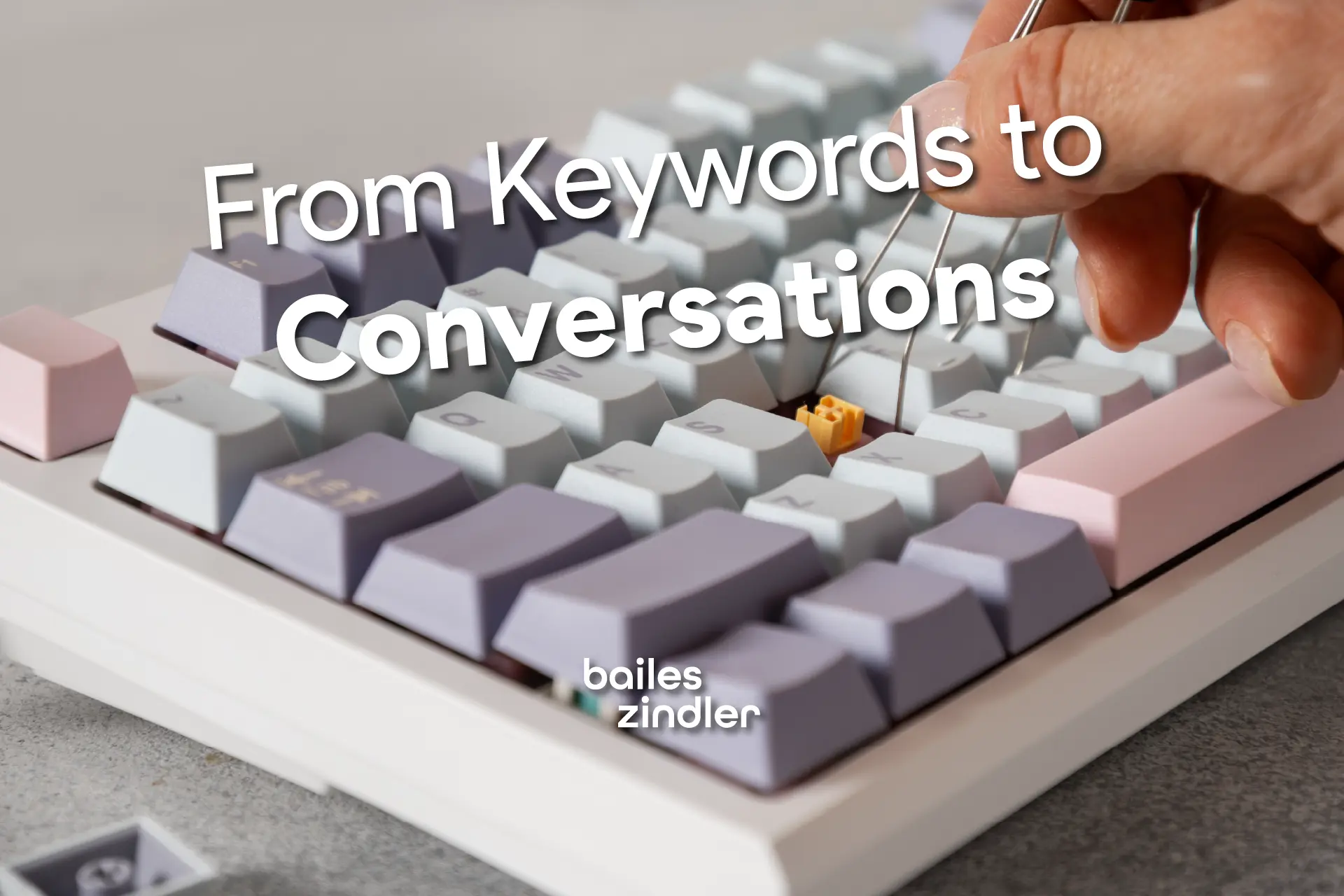On a Tuesday afternoon a writer hits D and gets ddddd. They do not type “keyboard broken.” They ask, “Is this switch chatter, firmware debounce, or dust, and what will fix it fastest?” A helpful friend does not list parts. They ask a follow-up. Then another. In five minutes the board is open, the switch is tested, debounce is tuned, and the chatter is gone.
Search used to be a shelf of parts. Today it behaves like that friend.
AI-powered results on Google and Bing synthesize, summarize, and invite the next question. That shift rewards writing that helps a conversation along, not pages that repeat a phrase. It also explains why the old rituals of SEO often leave good work stranded below the fold.
The interface changed. Behavior followed.
A decade ago a query returned links. Now the page answers and nudges you to explore related questions. Google AI Overviews provide a snapshot with links to dig deeper. Bing Copilot Search promises quick summaries with cited sources and suggestions for follow-ups.
Once a result invites a follow-up, people stop typing fragments and start speaking in complete thoughts. The winner is not the page that repeats “key chatter.” It is the page that calmly walks through causes, the quick fix, the parts list, and what to try next.
Implication: treat every page as the opening move in a dialogue.
Why keyword habits are failing
Old SEO was comfortable with rituals. Match the wording. Hit the density. Collect the links. Generative systems read for meaning and utility. They do not tally exact phrases. They assemble an answer from the clearest passages they can find, then cite them.
Two more realities push the same direction:
- Quality filters are sharper. Thin and repetitive pages lose ground to helpful, people-first content.
- Position is less protective. AI Overviews often cite sources that were not ranking on page one, so overlap with top 10 organic results can be surprisingly low.
Implication: write to satisfy intent, not a meter.
The numbers that made marketers sit up
When an AI Overview appears, traditional clicks tend to fall. Multiple analyses have reported sizable CTR declines for queries that trigger AI answers, including top-result click-through dropping by about a third in some datasets. You can argue with the exact percentages. You cannot argue with the trajectory. More answers on the page means fewer default clicks on the first blue link.
GEO: Generative Engine Optimization
Think of GEO as the sequel to SEO. The job is not only to rank. The job is to be quoted inside the answer.
Ask three questions as you draft:
- Would this passage make a crisp, stand-alone pull quote?
- Is the fact current enough to trust on its own?
- Could a non-expert repeat this explanation without mangling it?
If the answer is yes three times, you are writing GEO material.
Structure for conversations, not clicks
The easiest way to be useful to a model is to be useful to a person.
- Lead with the answer. Give a two to three sentence takeaway before you roam.
- Anticipate the follow-up. If someone asks “Is X good,” the next three questions are usually price, reliability, and alternatives. Give each a subheading.
- Write in Q and A seams. You do not need a formal FAQ on every page. You do need short, copy-and-paste-able answers inside the flow.
- Prefer one great hub to ten flimsy offshoots. AI results often pull multiple snippets from a single strong page. Depth beats fragmentation.
Who gets cited now
Communities and clear explainers travel well in AI summaries. That is partly structural. In 2024 Google expanded its partnership with Reddit for real-time access to Reddit’s Data API, which helps Google surface forum content. When a result needs lived experience, a thread where owners compare notes can beat a glossy overview. When it needs a clean definition or a side-by-side comparison, a careful explainer wins.
What gets sidelined is the page that treats users like traffic. If your headline promises a verdict but the text delivers a shopping list of affiliate links, you have not answered anything. In a conversation, that style reads as evasion.
A practical GEO checklist
Use this when you write or revise:
- Semantic scaffolding. Clear H2s and H3s that mirror real questions. One idea per section.
- Snippet-ready blocks. Concise paragraphs of three to five sentences that could be quoted without surgery.
- Comparisons and context. Tables or bullets that show differences at a glance. Label units, dates, and sources.
- Recency signals. Note “Updated: Month Year” where facts change. Refresh or remove stale claims.
- Credible voices. Add bylines with credentials, cite reputable sources, and include first-hand notes when you actually tested something.
- Internal paths. Link naturally to deeper explainer pages so a model can follow the thread the same way a reader would.
- Clean basics. Fast load, mobile friendly, readable HTML. If a crawler struggles, the model never meets your best paragraph.
Pin this on your monitor: If a curious stranger read only this section, would they feel ready to act?
The bigger idea
We often overestimate the power of the obvious advantage and underestimate the nimble response. Search built an empire on pages that looked strong to an index. AI search favors pages that behave strong in a conversation.
So the task is simple to say and hard to fake. Stop chasing keywords. Start completing thoughts. Write the passage an answer engine would be proud to quote. Organize your site so the next two questions are already waiting.

